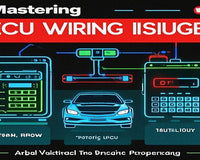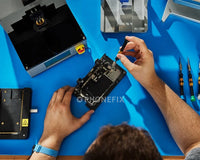Experiencing an engine misfire can be a frustrating and concerning issue for any vehicle owner. Not only does it lead to poor performance and rough idling, but it can also cause damage to other engine components if left unaddressed. 
Engine misfire occurs when one or more cylinders in the engine fail to produce power as expected. This can happen due to various reasons, such as problems with the ignition system, fuel delivery, or engine mechanical issues. When a misfire occurs, you may notice symptoms like a rough running engine, decreased power, increased fuel consumption, and in some cases, the check engine light illuminating on your dashboard.
To accurately diagnose an engine misfire, you can check the following step-by-step:
Step 1: Check for Diagnostic Trouble Codes (DTCs).
Plug the scanner into the OBD-II port and turn on the ignition (but don't start the engine). The scanner will communicate with the ECU and retrieve any stored trouble codes. Misfire-related codes usually start with "P0300" for a random misfire or "P0301" through "P0312" for specific cylinder misfires (e.g., P0301 indicates a misfire in cylinder 1). 
Step 2: Inspect the Ignition System.
Inspect the spark plugs for signs of wear, such as eroded electrodes, fouling (black, oily, or white deposits), or cracks. If any spark plugs look damaged or worn out, it's a good idea to replace them. You can also use multimeter to test the spark plug's resistance; a reading outside the manufacturer's specified range indicates a bad spark plug.
Ignition Coils: With the multimeter set to measure resistance, test each ignition coil. Disconnect the electrical connector from the coil and measure the primary and secondary resistance. Compare the readings to the manufacturer's specifications. If an ignition coil has incorrect resistance values, it's likely faulty and should be replaced.
Step 3: Examine the Fuel System.
Problems with fuel delivery can also cause engine misfires.
FNIRSI FD10 OBD2 scanners can check the Fuel injector operation and even measure the fuel flow rate. You can also listen to the injectors while the engine is running using a mechanic's stethoscope or a long screwdriver placed against the injector body; a clicking sound indicates that the injector is functioning. If an injector seems faulty, you may need to remove it and use specialized cleaning equipment or replace it. 
Step 4: Check for Engine Mechanical Issues.
In some cases, engine misfires can be caused by mechanical problems, such as a blown head gasket, low compression, or a damaged camshaft. Record the compression readings for each cylinder. If one or more cylinders have significantly lower compression than the others, it could indicate a problem like a worn piston ring, a leaking valve, or a blown head gasket.
Step 5: Check the ECU Programming (if necessary).
If you've ruled out ignition, fuel, and mechanical issues, and suspect that the misfire might be related to incorrect ECU programming, it's time to use the FC200 ECU Programmer. Connect the programmer to the ECU and read the existing programming. Compare it to the correct settings for your vehicle's make, model, and engine configuration. If there are discrepancies, you can use the programmer to update the ECU programming. However, this step should be done with caution, as incorrect programming can cause even more problems.
Diagnosing an engine misfire requires a systematic approach and the right tools. By following the steps outlined above, you can identify the root cause of the misfire and take the appropriate steps to fix it. Remember, if you're unsure about any part of the diagnostic process or if the problem persists after attempting repairs, it's always a good idea to consult a professional automotive technician.
How to Diagnose an Engine Misfire at Home: Save Time and Money with These Tips










